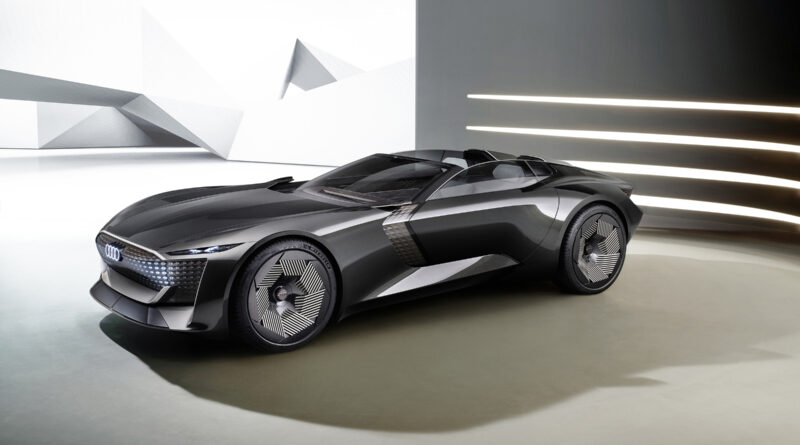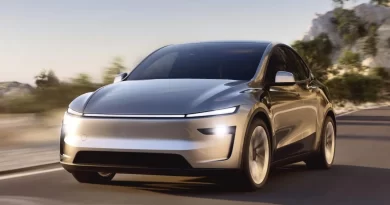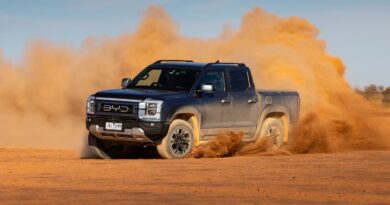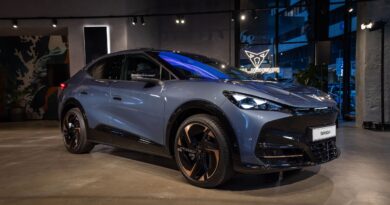Audi Skysphere EV concept can change its length
The Audi Skysphere concept is a vision into a radical new electric car future where autonomous driving lives side-by-side with driving enjoyment.
The radical two-seater is the first of three “sphere” concepts Audi is planning and can change its length, width, height and wheelbase in the transition from autonomous driving GT mode and high-performance Sports mode with the driver in control.
Inspired by the Horch 853 roadster of 1937 (Horch is one of the precursors to Audi), the rear-drive roadster concept has motors to slide parts of the body and frame into each other to change the wheelbase by 250mm.
When in its longer mode there are extra gills under the front windscreen.
The doors are rear-hinged like those in a modern Rolls-Royce.
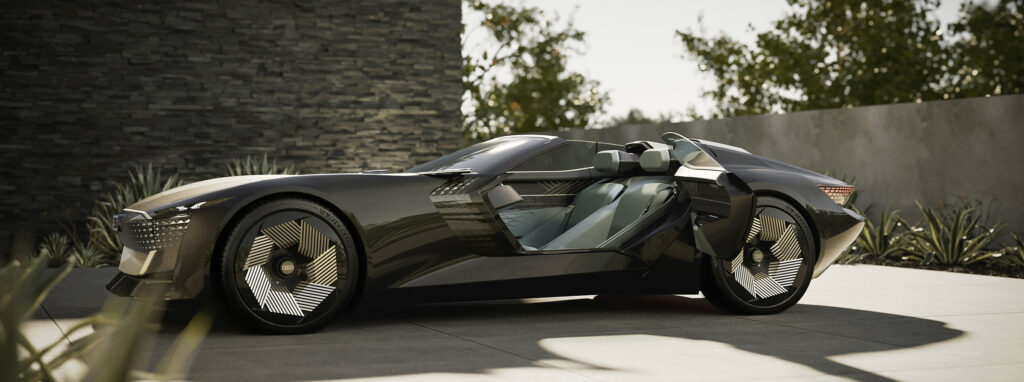
It changes the car from a driverless GT car that is 5.19 metres long to a more athletic driver-focused car in Sport mode that is 4.94m long.
Driverless some of the time
The Skysphere is not wholly driverless, instead meeting the level 4 SAE definition of automation that gives the car full control on certain roads and driving situations.
In driverless mode the pedals and steering wheel retreat to maximise cabin space and create an art deco-infused cabin.
The adaptive air suspension uses sat-nav data and active chassis controls adjust to bumps and maximise comfort.

The touchscreen display is 1415mm wide and 180mm high and operates many controls, but can also be used to access the internet, conduct video conferences or stream movies on the run.
And forget cupholders… the Skysphere has an inbuilt Champagne holder with two flutes to keep people hydrated on long rides.
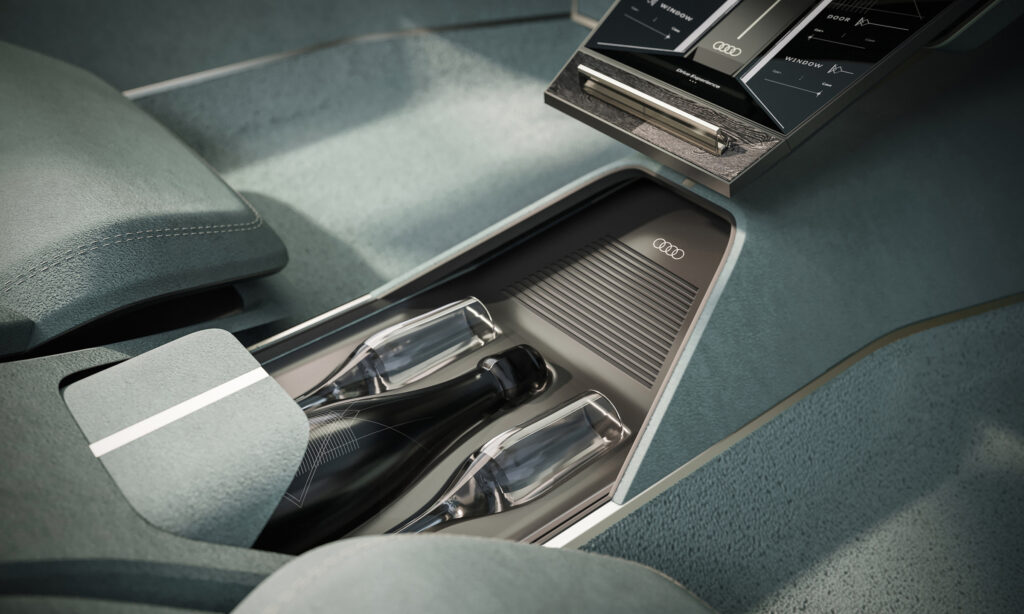
When the driver wants to – or is told to – take control the cabin transforms into what Audi describes as “an ergonomically perfect driving machine cockpit”, reverting to a more traditional layout.
The suspension also lowers 10mm and the steering ratio can be adjusted, while there’s also rear-wheel steering to maximise low-speed manouvreabilty.
The Skysphere also shows how sound systems could integrate into cars in future. Speakers are hidden in the door panels and the headrests are designed to lower wind noise by reducing turbulence when the roof is retracted.
Driving enjoyment over performance
Naturally, there’s no shortage of grunt, although clearly outright pace hasn’t been the sole focus of the Skysphere; the 0-100km/h time, for example, is brisk at four seconds, but nowhere near the ballistic acceleration of many modern EVs, Audi’s RS e-Tron GT included.
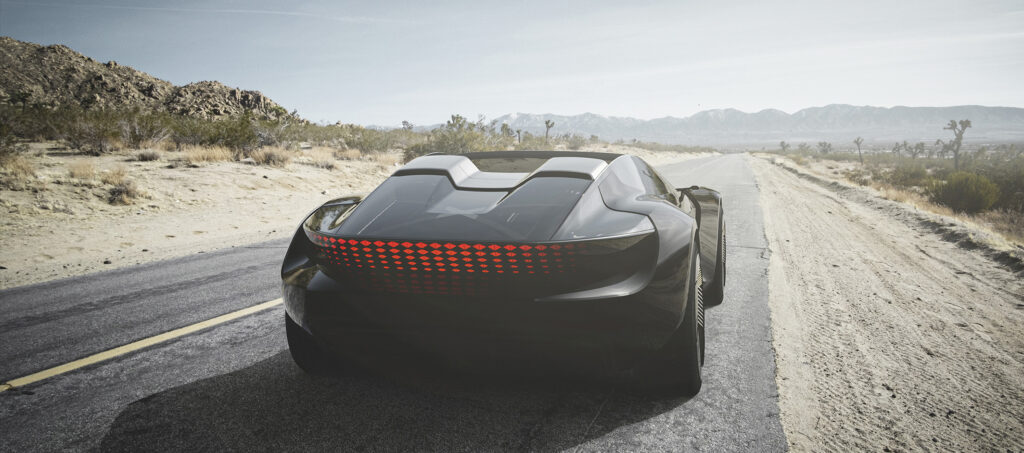
“New technologies like electrification, digitalization, and autonomous driving gave us the opportunity to create an experience that goes way beyond the one that typical roadsters offer today,” said Skysphere design project manager Gael Buzyn.
Like the upcoming Audi e-Tron GT and Porsche Taycan, the Skysphere uses an 800V electrical architecture for faster charging.
The peak outputs are 465kW and 750Nm and Audi says the Skysphere weighs around 1800kg, which is less than many EVs.
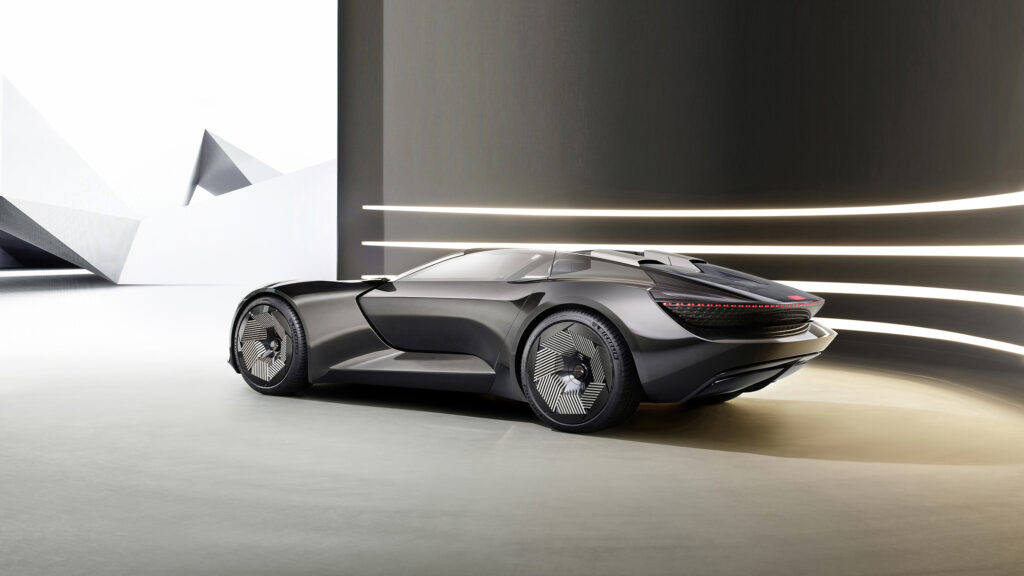
And the Skysphere takes some inspiration from traditional ICE cars in its layout.
For starters, it’s rear-wheel drive with about 60 percent of its weight over those rear wheels (most high-performance EVs use dual motors for an all-wheel drive set-up).
It also has a long bonnet housing many of the EV components, including the DC/DC converter, actuators and some of the systems needed to change the length of the car.
There’s also under-bonnet storage accessed via a gullwing-style split bonnet that theatrically reveals two luggage pods.
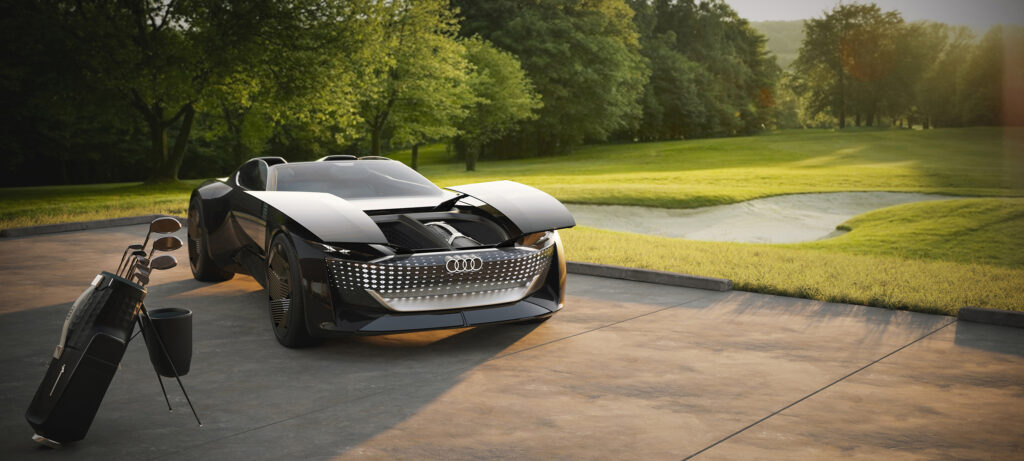
And there’s an eco-focus throughout the car.
There’s no leather, for example, with “sustainably produced microfiber fabric” taking its place on the seats, as well as fake leather elsewhere.
And there’s even an Australian touch in the Skysphere. Touches of wood trim on the doors, steering wheel and centre console are made of environmentally certified eucalyptus.





